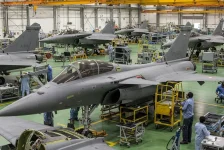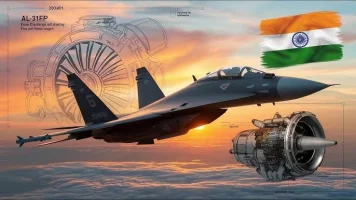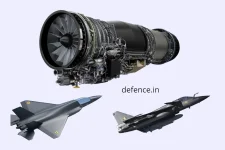- Views: 1K
- Replies: 3

The People's Liberation Army Navy (PLAN) has officially introduced the J-15T, a catapult-capable variant of its J-15 carrier-based fighter jet. While boasting enhancements like advanced avionics, a powerful AESA radar, and indigenous WS-10 engines, the J-15T continues to face limitations rooted in its reverse-engineered origins.
The J-15T's design is based on the Russian Su-33 Flanker-D, a Soviet-era naval fighter. China acquired the Su-33's blueprints by purchasing a prototype from Ukraine, allowing its engineers to reverse-engineer and adapt the aircraft for the PLAN's needs. This approach, while offering a cost-effective solution, has led to inherent design constraints that impact the J-15's overall performance.
Notable Upgrades in the J-15T
- Composite Materials and Additive Manufacturing: The J-15T incorporates high-grade composite materials and advanced additive manufacturing techniques to reduce weight and increase durability.
- Active Electronically Scanned Array (AESA) Radar: This advanced radar system provides superior target detection and tracking capabilities, enhancing situational awareness and engagement range.
- Upgraded Avionics and Electronic Warfare Suite: The J-15T features advanced avionics for improved navigation, targeting, and sensor fusion, along with an upgraded electronic warfare suite to counter modern threats.
- WS-10 Engines: Replacing the Russian-sourced AL-31F engines, the indigenous WS-10 engines offer improved thrust and reliability, although questions remain about their long-term performance in demanding carrier operations.
Persistent Challenges
Despite these upgrades, the J-15 program has faced persistent challenges. The ski-jump ramp launch system used on China's older carriers, the Liaoning and Shandong, significantly restricts the J-15's maximum takeoff weight, limiting its payload and operational range. This constraint forces the J-15T to compromise between fuel and armament, particularly in combat scenarios.The J-15T's catapult-capable configuration is designed for compatibility with China's newer Type 003 carrier, which features electromagnetic catapult launch systems. This advancement should alleviate some of the weight limitations that have plagued the J-15 on older carriers.
However, concerns remain regarding the J-15T's reliability and overall performance. Reports indicate issues with engine reliability, structural fatigue, and avionics, potentially affecting the jet's operational availability.
Reverse-Engineering Limitations:
Adapting the Su-33's airframe to fit within China's existing carrier infrastructure and the new catapult launch system on the Type 003 has proven challenging.Russian defence analyst Vasily Kashin suggests that China's decision to purchase a single Su-33 prototype from Ukraine, rather than acquiring multiple aircraft from Russia for licensed production, has resulted in design limitations that continue to affect the J-15.
Future Outlook
The J-15T represents China's ambition to bolster its naval aviation capabilities. The addition of catapult-capable fighters will enable China's newer carriers to launch heavier payloads and conduct more extensive missions, potentially expanding the PLAN's reach and combat power in the Indo-Pacific region.However, the J-15T's inherent limitations and the PLAN's ongoing challenges in adapting the Su-33 design raise questions about the platform's long-term viability. China is likely to continue developing more advanced carrier-based fighters, including the J-35, which promises stealth capabilities and next-generation systems better suited for its future carriers.



